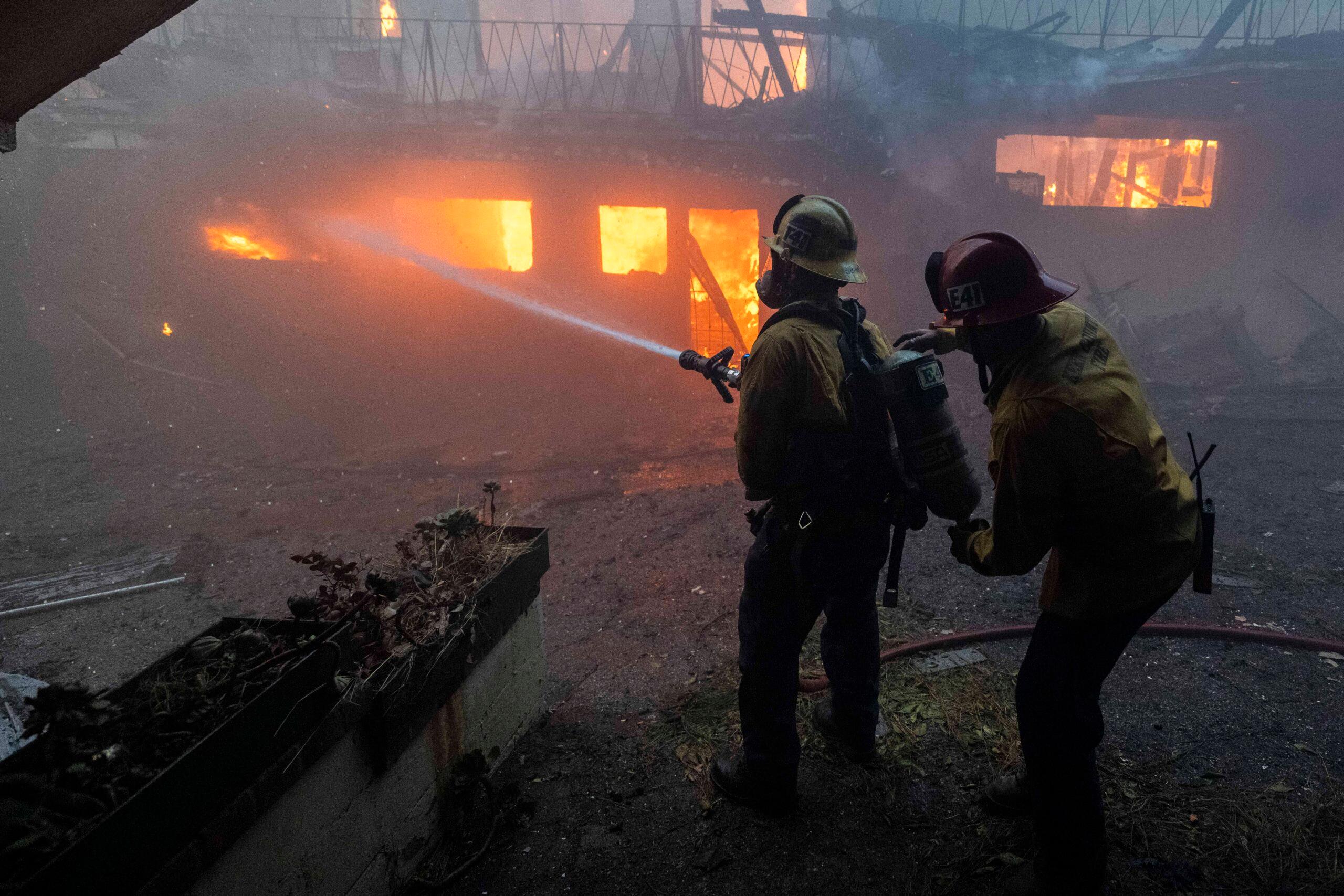
Plain English With Derek Thompson
The L.A. Fires: How They Happened, Climate Change’s Role, and What the City Must Do Now
Hosts
About the episode
With so many confusing narratives unfolding around a fire that is still raging out of control, I wanted to talk to somebody I knew and trusted to get stories like this right. Robinson Meyer is the founder and editor of Heatmap News and a former staff writer at The Atlantic, where he covered climate news and related disasters. We talk about why this Los Angeles fire is so unusual, how it differs from most recent forest fires in California, the role of climate change, and what Los Angeles and other places can do to protect people from the inevitability of future disasters.
If you have questions, observations, or ideas for future episodes, email us at PlainEnglish@Spotify.com.
Summary
In the following excerpt, Derek and Robinson Meyer break down why the most recent fires in California are different from the types of fires the state has commonly seen over the past decade.
Derek Thompson: I want to reserve a good chunk of time to talk about how to make Los Angeles and, by extension, California more resilient to fire risk. But first, I think it’s worthwhile to talk about what’s happening on the ground right now. Fire is not unusual in California, but this fire is unusual, certainly in the sheer amount of urban devastation it’s unleashing in Los Angeles. What do you think makes this fire different?
Robinson Meyer: I think when we think about this fire, we have to almost separate it from the set of fires that have happened in California over the past decade because over the past decade, as Californians know, as anyone around the country knows, there have been a series of extremely destructive, record-breaking fires around California. Most of them have happened in the state’s north or central region. Most of them have been forest fires. This fire is different because it’s happening in the south. It’s happening not in the forest [but] in chaparral or in brushland, and it’s happening around cities and all of that around Los Angeles. And so all of that makes it really different from even the type of extreme firestorm-style fire that we’ve been hearing about from California for the past decade or so.
Thompson: And so when you look at the fact that this isn’t happening in a forest and that it seems incredibly related to the wind, just tell me again, what do you think are the set of circumstances in Southern California that seemed to have created this hellish context for a fire of this level of destruction?
Meyer: When you want to think about a forest fire or a wildfire of any type, there are three things you look for. The first is fuel, some kind of substance to burn. The second is oxygen. It needs oxygen to consume. That’s what fires devour. And the third thing is heat or a source of ignition. Most fires over the past decade in California—when you think about forest fires in California, it has been an extremely destructive past few years. Most of California’s largest and most destructive fires, including its largest and most destructive fire on record, have happened in the past 10 years. Most of them happened in Northern or Central California, and most of them were forest fires. They were moving through huge chunks of mostly uninhabited forest—although tragically there were villages, there were towns within that wildland, but moving mostly through uninhabited or scarcely inhabited forest—that had not been burned for a long time, where there had been a regime for the past century of putting out and fighting wildfires when you can. And that meant a huge amount of fuel had built up in the ecosystem. And that fuel, when there was a dry period or when there was a hot period or when there was just a source of ignition, was ready to combust in a huge firestorm. That’s been the driver of the big California fires over the past decade.
This fire, the Los Angeles fires are a little different. And I think when people think about this fire, they’re putting in ideas from thinking about the Camp Fire or any of the other big California fires from the past decade or the Napa fires. And they need to be thinking about this one a little different because it’s in Southern California. What makes this fire different is, number one, just the fact that it’s happening in and around Los Angeles, which means that instead of being a forest fire in a mostly remote area where you can do things like clear big firebreaks, where there’s a lot of room for firefighters to move around, a lot of freedom in their movement, this is happening in a city. And so the main source of fuel for this fire when it hasn’t been homes has not been forest, has not been the Northern California woods; it has been chaparral, it’s been brushland. It’s been this low, shrubby brush that is all across the Southern California coast.
What also makes this fire different and links it a little bit to the other set of California fires that we’ve seen is that it’s been a—California’s gone in and out of drought over the past decade. And when an area is in drought, when California is in drought, a few things can happen. First of all, it just gets very hot over the summer, and that dries out the vegetation. But what has contributed to this fire is that it was actually a wetter winter, and so a lot of vegetation had a chance to grow last winter. And then it hasn’t rained at all basically since May. [Each rainfall has contained] less than one-tenth of an inch of rain since May, and so all that vegetation has gotten completely dried out. It’s been hot. Basically, it was primed to burn. And then the Santa Ana winds, these hot, dry, almost like an atmospheric blow-dryer, came over the mountains, went through the fuel, and as soon as there was a source of ignition, it was just poised for a big fire.
This excerpt was edited for clarity. Listen to the rest of the episode here and follow the Plain English feed on Spotify.
Host: Derek Thompson
Guest: Robinson Meyer
Producer: Devon BaroldiLinks:
